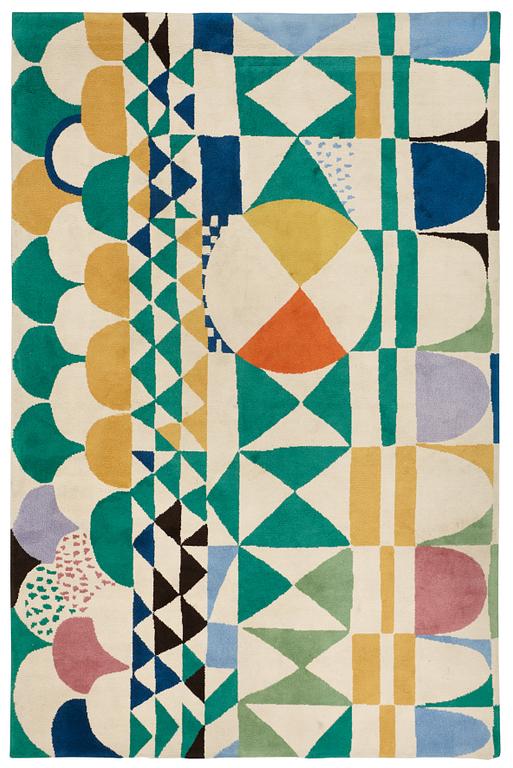Josef Frank
A CARPET, "Bows", tufted, ca 371,5 x 246,5 cm, design by Josef Frank, Almedahls.
The pattern is owned by the firm Backhausen in Vienna and is made, according to information, under license by Almedahls (the pattern has been made both as carpets and as fabrics). Josef Frank left a few carpet patterns in Vienna. A glued on label at the back: Design J. Frank, Made in Sweden by Designbrenner 1999, Almedahls AB.
Little wear, dirty, stains. The sides and ends have insignificant fold wear.
Kirjallisuus
Compare with Wängberg-Eriksson, Kristina: Pepis Flora - Josef Frank som mönsterkonstnär, Lund 1998/Kristianstad 2003, the printed fabric colour plate 182;MAK's exhibition catalogue "Josef Frank - Against Design. The Architect’s Anti-Formalist Oeuvre, edited by Christoph Thun-Hohenstein, Hermann Czech and Sebastian Hackenschmidt, Vienna/Birkhäuser Verlag, Basel 2016, page 223.
Suunnittelijat
Josef Frank was born in Austria and studied architecture in Vienna. As an architect, he worked with private home areas, villas and apartment buildings. In 1925 he started his own interior design firm Haus und Garten together with two architect colleagues. In connection with the advance of the Nazis, he emigrated to Sweden and was employed in 1934 at Svenskt Tenn. After the outbreak of World War II, Josef Frank, who came from a Jewish family, was forced into exile in New York. At Svenskt Tenn, he made an impact on the product range for four decades; especially when it comes to furniture and fabric prints.
Lue lisää

























































